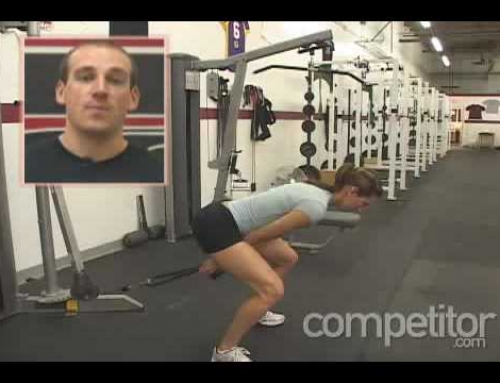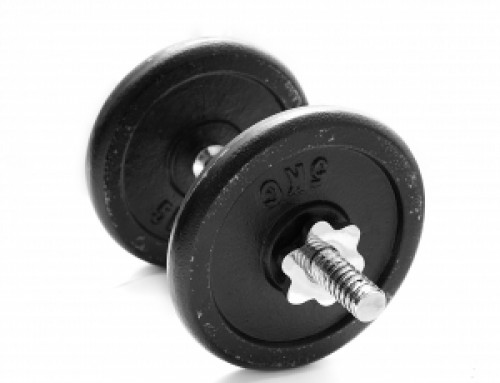I want to have some disco urse today on the topic of plyometrics. You’ve probably heard the word before and may even know that it involves exercise, but may not know any details past that. I am in the gym at least three days a week and I can tell you that I rarely if ever see someone in the gym performing these exercises (besides me in the mirror). Most folks go in an get some work done on the vanity muscles: pectorals and arms for men, glutes and legs for women. This is all well and good if you want to look pretty (who doesn’t?), but if you are training for performance in a sport, you’ll need to work on other aspects of your fitness. This is where plyometrics can add some spring to your step – literally.
urse today on the topic of plyometrics. You’ve probably heard the word before and may even know that it involves exercise, but may not know any details past that. I am in the gym at least three days a week and I can tell you that I rarely if ever see someone in the gym performing these exercises (besides me in the mirror). Most folks go in an get some work done on the vanity muscles: pectorals and arms for men, glutes and legs for women. This is all well and good if you want to look pretty (who doesn’t?), but if you are training for performance in a sport, you’ll need to work on other aspects of your fitness. This is where plyometrics can add some spring to your step – literally.
Before we get off and running and add the effectiveness of plyometrics into our fitness routine, we need to understand what plyometrics is, how to properly perform some of the exercises, and how it can benefit our tennis game. Let’s take a look into this mysterious body of exercises and answer some questions.
What is Plyometrics?
I’ll try and explain as simply as I can – plyometrics is a term used to describe exercises that use the muscles natural elasticity to create explosive reactive power through contractions of the muscle fiber. Sounds complicated, right? Not at all. Imagine your muscles as rubber bands – when you stretch a rubber band, you create stored energy. In plyometric exercises, the storing of energy in the muscles is known as the eccentric phase, and the rapid release of that stored energy is known as the concentric phase. Imagine yourself trying to jump and reach something well over your head; you would first bend your knees and your waist and then explode upwards – plyometrics at work. You first store the energy by creating tension in the muscles of the legs and then releasing that energy upwards as you jump. You can reach higher as a result of first storing the energy (lengthening the leg muscles) and then releasing it (contraction of the leg muscles). Plyometrics simply uses these properties of the muscle fibers by conditioning them to release the maximum amount of stored energy in the shortest distance.
Plyometric Training
Sounds great you say? Where do I sign up? Let’s take a look at some of this training and how it can benefit your on court performance. As we know from previous articles, tennis is very much an upper and lower body sport. It involves sprinting, jumping, rotating the core, loading and release of power in the shoulders and arms, and quick changes in direction. Can you see how being able to increase the amount of power you are able to produce in a shorter distance could benefit your tennis yet? It is important to note that there are both low and high intensity plyometric exercises, and you should have or develop a significant base of strength before attempting any of the higher intensity training with any weight approaching that of your body weight.
Lower Body Training
Tennis is a game of getting to the ball quickly- if you don’t execute that part of the game, the most perfect forehand form in the world won’t do you any good. Squat jumps, jumps to and from boxes, lateral box jumps, and ring/ladder drills are all excellent ways to improve your foot quickness. These exercises and more can be found here:http://www.sport-fitness-advisor.com/plyometricexercises.html. As noted in the linked article, these exercises will be more effective when paired with a good strength training program. The more muscle fibers that you have to make the contractions, the more power and speed you will be able to generate.
Upper Body Training
This is where we will need to really exercise caution in the intensity of training that we are performing. If you are not sufficiently strong, you can do more harm than good by using too heavy a weight or working at too high an intensity level. Please consult a qualified trainer or just start low and slow in order to avoid injury. That being said, for those who have developed a good base of strength, some of these challenging drills will be just what you need to reach the next level. The upper body work found here http://www.sport-fitness-advisor.com/plyometric-drills.html will make a great supplement to your fitness routine. The overhead and side throws will serve to increase racquet-head speed and stability through the impact zone. Squat throws and plyometric push ups will enable you to transfer power more easily from your legs and core to your chest, shoulders, and arms.
I hope that this article has served to enlighten you to the benefits of plyometric training as well as getting you excited about increasing your performance on the tennis court! I have been incorporating these types of exercises as well as some Olympic weight lifting into my training for the past few years, and I can tell you that I feel faster and stronger than I ever have. This type of training was built for sports like tennis, and studies have shown that even one or two types of low intensity plyometric training done one to three times a week can significantly improve motor performance. Talk about more bang for your workout buck. Now get out there and try some new training! Keeping your workout routine fresh and exciting is half the battle, and I hope I’ve given you some new ideas about what to do with your gym time.







